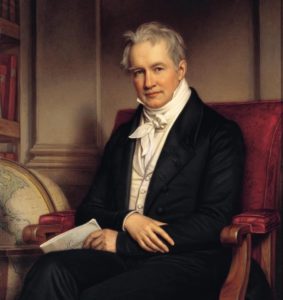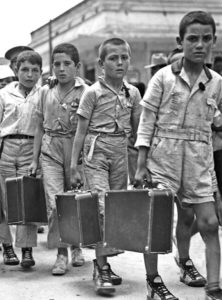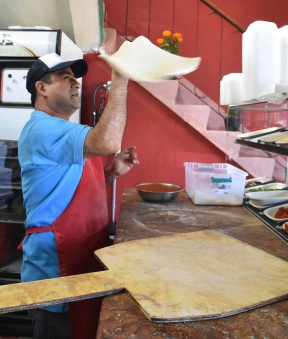México has also taken in many people in need of asylum
News Category: News and Community News
-
Last month, during a joint press conference with his Spanish counterpart, Argentine President Alberto Fernandez said: “Mexicans come from the Indians, Brazilians come from the jungle and Argentines come from the boats”.
This statement infuriated Mexicans, and I am sure Brazilians as well, for many different reasons. Some Mexicans were upset because they didn’t like being reminded of their indigenous roots. Others were outraged that he stated his belief that Argentines were too old to be his countrymen and did not want to be considered Latin Americans. Others had a good laugh at all the memes that arose from this incident.
I was not offended at all. Fernandez’s statement is partially true after all: most of us have some degree of native DNA; this is just a fact. The part that caused me some problems was the oversimplification of what constitutes the modern Mexican.
The failure to acknowledge the history and contributions of the various immigrants who have come (and continue to come) to Mexico throughout its history is a terrible historical omission. Official history books in Mexican public schools recapitulate the story of who the modern Mexican is with a basic explanation: a native Aztec had a son with a bearded Spanish conquistador, and that’s it.
There is a lot, so let me present a brief and humble summary of some of the more famous migratory flows into Mexico.
Salvador Gutierrez is a Chipelo, Puebla, descendant of 19th-century immigrants from Italy’s Veneto region. José Sorrentino
Lebanese immigrants first arrived in Mexico during the last decades of the 19th century. Some were fleeing the religious persecution of the Ottoman Empire. Others were just looking for a better life for their families.The Lebanese diaspora quickly assimilated into their new land, and within a few generations, their descendants had flourished in Mexico.
Notable Mexicans of Lebanese descent include former President Plutarco Elias Calles, better known as “El Turco,” as well as former Energy Minister Antonio Mead Corribina. There are also businessmen Carlos Slim and Alfredo Harp, as well as actors Salma Hayek, Mauricio Garces, and Demian Bachir (you might want to ask a Mexican friend about the latter two). In the world of sports, there is soccer player Miguel Laine and boxer Jose Suleiman.
But the Mexican-Lebanese are not just an ethereal group of celebrities and successful beauties. Not all of them made it to the top of Mexican society. Some of them became ordinary, middle-class Mexicans who did not marry into the Lebanese diaspora. Growing up, it was common for me to have colleagues or professors with Lebanese surnames but who had no other trace of their Lebanese heritage or customs.
The famous American chef Anthony Bourdain once said that Mexico is the brother of the United States from another mother. In some cases at my elementary school in Ciudad Juarez, this was absolutely true. When you think of American immigration to Mexico, you may picture thousands of snowbirds seeking sunny weather in Ajijic, Chapala, Oaxaca, Puerto Vallarta, or San Miguel de Allende, but American immigration to Mexico is not so simple, and not always beautiful.
The first American immigrants to Mexico were those who accompanied Stephen Austin to Texas when it was still Mexico, but let’s skip this part because it has become very controversial.

During the harrowing time in U.S. history known as the “Indian Removal,” some Kickapoo and Seminole American Indians in Florida turned south. These groups ended up settling in the northern state of Coahuila, where the Mexican government granted concessions and land to the northern frontiersmen and deterred further expansionist attempts from the north.
Part of this group was the Black Seminoles, called Mascogos after they settled in Mexico. These were runaway slaves who had previously disappeared into Seminole Indian groups. Immediately after the secession of Texas from Mexico, thousands of slaves, especially those from the southern Texas region, sought freedom in Mexico, where slavery was illegal.
Subsequently, during the last decades of the 19th century, Mexican President Porfirio Diaz adopted a policy to attract immigrants to the country’s uninhabited population (the word on the street was that there was a preference for white settlers), and many Americans took advantage of this opportunity to come to Mexico to set up mining businesses, machine stores, railroad suppliers and other heavy industries.
But it doesn’t stop there: another significant influx of American immigrants came to Mexico in the late 19th century: a group of Americans from the Mormon Church established a town near Nuevo Casas Grandes, Chihuahua. An interesting fact about this “colony” is that it is where George Romney, governor of Michigan in the 1960s and father of Mitt Romney, was born.
The contributions of U.S. immigrants are evident in Mexico: a long list of notable Mexicans of U.S. descent, such as former President Vicente Fox and Congressman Santiago Creel, Mexican-American businesses, towns, and products in Mexico have a history intertwined with U.S. immigrants.
The relationship between Americans and Mexicans is strong and goes beyond trade, politics or immigration. If you are interested in reading more on this topic, you can read more in one of my old columns.

When the German explorer Alexander von Humboldt returned to Berlin in 1827 after an extensive exploration of Latin America, he described Mexico City as elegant as Turin or Milan. This romantic description of the city, and the mysticism with which he described the country, attracted the first German settlers to Mexico.
Later, thanks to Porfirio Díaz’s modernization plans and open immigration policies, many Germans came here to work as general telegraph technicians, engineers, and skilled labor.
One such professional immigrant was Frida Kahlo’s father, Guillermo Kahlo (originally Wilhelm), who came to Mexico in the late 19th century and was one of the official photographers of the Díaz regime.
In 1922, another large wave of German immigrants arrived in Mexico, when President Alvaro Obregón offered a series of concessions to a group of Mennonites to settle in the northern state of Chihuahua. The influence of this group in my home state was so widespread that Mennonite products became staples in the diet of many Chihuahuas.
Then, during World War II, as in other Latin American countries, many German Jews fleeing the Nazi regime found open doors in Mexico.
German immigrants manifest themselves in many areas of Mexican life. For example, it is sometimes difficult to distinguish Bavarian music from the old music of northern Mexico. Rows.
Hernán Cortés and his crew, of course, arrived in Mexico in 1519, to found the colony of New Spain. During three centuries of colonization, the Spaniards mixed with the indigenous population, and thus the native was born.
But Spanish immigration to Mexico did not end with Mexico’s independence. The first significant wave of Spanish immigrants to Mexico occurred after the end of New Spain, during the presidency of Porfirio Diaz and his policy of open immigration to the population of the vast uninhabited areas of Mexico, a policy that brought many immigrant groups.
Many poor Spanish farmers who came to Mexico in search of new opportunities settled in the states of Jalisco and Durango. During the second half of the 19th and early 20th centuries, Mexico became one of the largest host countries for Spanish immigrants and refugees.
Among these refugees were thousands of Sephardic Jews who were rescued by Mexican diplomat Francisco Bosques during World War II.
Also during this same period, Mexico opened its doors to Spanish refugees fleeing Spanish dictator Francisco Franco. Among these refugees were the “Morelia Children,” a group of thousands of unaccompanied minors who were sent alone to Mexico and welcomed in the city of Morelia.
The legacy of these recent immigrants in Mexico can be seen in the businesses and institutions they founded, such as Hospital Español in Mexico City, Editorial Editorial Porrua, Bimbo (the largest commercial bakery in the world), Churreria El Moro (cross maker), Mundet Beverage Company, the Suriana supermarket chain and many more.

Mexico also has Italian immigrants. When I lived in Milan, I was invited to celebrate in the Veneto language of Segosino. I learned that their dialect of the language is only spoken in this small town and its sister city, Chipilo, Puebla.
Like other immigrant groups, Italians arrived in Mexico mainly during the presidency of Porfirio Diaz. During those years, according to some Italians in Segusino, an invitation from the Mexican government to white, northern, Catholic Italians (the racism that goes with the times) to live in Mexico somehow reached the Veneto region.
These first Italians in Mexico established vanilla and dairy plantations in Veracruz and Puebla and then moved to Chipilo, a town that is still famous in Mexico for its good cheese, pizza, and ice cream.
This is just a sample of the different waves of immigration that came to Mexico. And there are others, such as the Greeks, Chinese, French, and Russians in Tijuana, and runaway African slaves in Oaxaca and Veracruz. In addition, thousands of migrants and refugees continue to arrive in Mexico from Cuba, Haiti, Venezuela, Honduras, and many other countries.
Mexico is a diverse country and has always been a destination for immigrants. Genetics are so unpredictable here that almost every family has a child who looks different and ends up with a nickname based on their appearances, such as Guerito (light-skinned or blonde), Canela (“cinnamon-colored”), Rubio (also for blondes), and others specifies their country of origin – Chinese and Russian, etc.).
If you meet a Mexican who doesn’t fit your concept of what a Mexican is supposed to look like, don’t tell them they don’t sound Mexican; this is not a compliment, let’s get rid of our stereotypes.

Mexico is a melting pot, a melting pot of chile con carne, we keep adding spicy ingredients.
-


Leave a Reply